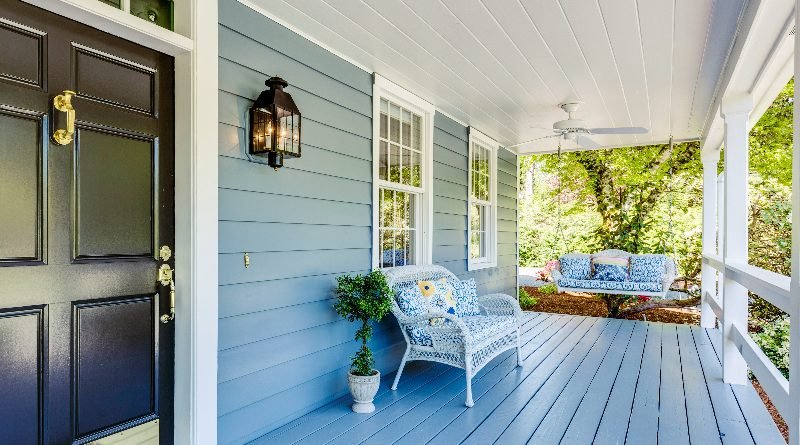Composite vs. Wood Decks: What Every Homeowner Should Know
In improving your outside living area, few things can compare to the aesthetic value and practicality of a well-built deck. However, choosing the right decking material can be daunting for a homeowner. The two main contenders in decking are composite and wood, each with advantages and drawbacks. In this blog, we will dive into the essential aspects of composite and wood decking, helping you make an informed decision for your home.
Understanding Composite Decking
What is Composite Decking?
Composite decking is a modern option comprising wood fibres, recycled plastic, and binding agents. This mixture is designed to provide the best of both worlds: wood’s natural appearance and plastic’s durability. Check Ovaeda today for a wide range of options and expert advice.
Advantages of Composite Decking
Many attractive factors have contributed to composite decking’s meteoric popularity over the past few years. Some of the most important benefits of composite decking are these:
- Durability: Composite decking outlasts wood decking in terms of durability and weather resistance. It is a great option for places with unpredictable weather because it does not easily rot, deteriorate, or become infested with insects.
- Low Maintenance: One of the biggest advantages of composite decking is its minimal maintenance requirements. Unlike wood decking, composite does not require regular staining, sealing, or painting. To maintain its pristine appearance, a simple washing with soap and water every so often is generally enough.
- Longevity: As a general rule, composite decking outlasts wood decking. Many manufacturers offer warranties ranging from 25 to 30 years, ensuring that your investment will last for decades.
- Colour and Appearance: A wide variety of colours and styles are available for composite decking so that homeowners may find the perfect fit for their home’s style. It can imitate the look of genuine wood while avoiding its disadvantages.
- Environmentally Friendly: Composite decking materials might be an eco-friendly option because they are composed of recycled wood and plastic. Additionally, composite decking eliminates the need for harmful wood preservatives and chemicals.
- Resistance to Fading: Composite decking is designed to resist fading and colour changes due to UV exposure over time. Many composites come with UV inhibitors that help maintain their original colour.
- Splinter-Free and Safe: Composite decking is safer for kids and dogs than wood since it doesn’t splinter. It also remains cooler underfoot on hot summer days.
- Uniformity: Composite decking boards have a consistent size and shape, which makes installation easier and ensures a smooth, uniform surface.
Types of Composite Decking
Not all composite decking is the same. There are variations to consider:
- Capped vs. Uncapped: Capped composite decking has an additional protective layer, making it even more resistant to staining, fading, and moisture.
- Solid vs. Hollow: Solid composite boards offer better strength and durability than hollow ones.
Exploring Wood Decking
Advantages of Wood Decking
Wood decking has been popular for outdoor spaces for many years due to its timeless appeal and natural beauty. Here are some of the key advantages of wood decking:
- Natural Aesthetics: Wood decks offer a classic and warm appearance that many homeowners find appealing. The wood’s inherent beauty is enhanced by its natural patterns, hues, grains, and overall appearance in the outdoor area.
- Variety of Wood Species: Homeowners can choose from a wide range of wood species to suit their preferences and budget. Common options include pressure-treated wood, cedar, redwood, and tropical hardwoods like Ipe and Cumaru, each with unique appearance and characteristics.
- Initial Cost: Wood decking is often more budget-friendly upfront compared to composite materials. This can make it an attractive option for those with limited initial project budgets.
- Ease of Installation: Wood decks are relatively straightforward to install, and many homeowners with basic carpentry skills can tackle the project themselves, potentially saving on labour costs.
- Customisation: Wood decking can be easily cut, shaped, and customised to fit your outdoor space’s specific design and layout. This flexibility allows for creative and unique deck designs.
- Environmentally Friendly Options: Some wood species are sourced sustainably, and certified wood products are available for those concerned about the environmental impact of their decking choice.
- Natural Feel: Walking on a wood deck provides a natural and comfortable underfoot feel that some homeowners prefer over the feel of composite or other materials.
- Repairability: Replacing or repairing damaged or deteriorated wood boards can easily extend the lifespan of a wood deck.
Types of Wood Decking
Wood decking comes in various types, each with its unique characteristics:
- Pressure-Treated Wood: Affordable and widely available, pressure-treated wood is treated with chemicals to enhance durability.
- Cedar and Redwood: Known for their natural resistance to decay and insects, these woods offer a charming appearance.
- Tropical Hardwoods: Exotic hardwoods like Ipe and Cumaru are prized for their extreme durability and stunning visuals.
Choosing the Right Decking Material for Your Needs
Selecting the ideal decking material for your home involves considering various factors:
Climate and Location Considerations
Consider the local climate and your deck’s location. Different materials may perform better in specific weather conditions and geographic regions.
Budget Constraints
Evaluate your budget and weigh the initial costs against long-term expenses. Explore financing options if needed.
Aesthetics and Personal Preferences
Pick a material that reflects your taste and the design of your house. Consider the feel of composite vs. wood underfoot.
Environmental Concerns
Think about the sustainability of the materials you choose. Some composites are made from recycled materials, and certain wood types are sourced sustainably.
Maintenance and Upkeep
The level of maintenance required is a critical factor when deciding between composite and wood decking:
Cleaning and Maintenance for Composite Decks
Composite decks are low-maintenance, requiring periodic cleaning and occasional inspections for repairs or replacements.
Cleaning and Maintenance for Wood Decks
Wood decks demand more attention, including staining, sealing, and refinishing. Regular inspections and repairs are necessary for longevity.
Comparing the Effort
Consider the time and resources required for maintenance. While wood decks offer initial cost savings, the effort needed for upkeep should be factored in.
Conclusion
No one-size-fits-all answer exists to the ongoing debate between composite and wood decking. The perfect choice depends on your individual needs, budget, and priorities. Understanding the advantages, disadvantages, and maintenance requirements of both materials will help you decide on a beautiful and long-lasting deck that complements your home. Your outdoor space will be the talk of the town whether you go with the classic beauty of wood or the sleek modernity of composite.
Also visit Digital Global Times for more quality informative content.

